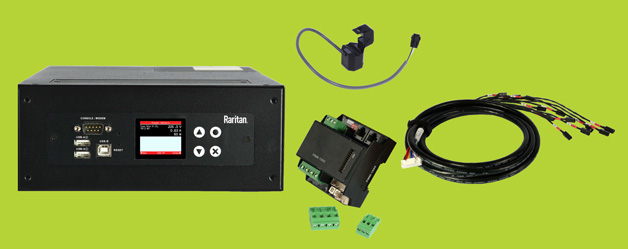The Raritan Blog
Home » Raritan Blog » Branch Circuit Monitoring: Power Monitoring and Measurement in Production Facilities
Branch Circuit Monitoring: Power Monitoring and Measurement in Production Facilities
Nicolas Sagnes
April 26, 2017

Industrial Machinery and increased automation across facilities are impacting power consumption like never before. Not only is it becoming increasingly difficult to address the needs of the modern facility, but the conditions that dictate those needs are also constantly evolving. Because of this, production facilities and data centers are often battling against things like overloaded circuit breakers - something that can lead to costly damages and lost productivity if left unchecked.
For these reasons, many facilities are turning to branch circuit monitoring to get the job done. If you're thinking about implementing branch circuit monitoring for power monitoring and measurement in your own production facility, there are a few key things you'll need to keep in mind.
What is Branch Circuit Monitoring?
As a method of measuring power for regular building electrical distribution at the branch circuit level (hence the name), branch circuit monitoring systems are often integrated into main power panels (Power Distribution Units) and remote power panels (RPPs) for superior visibility. They also offer much needed flexibility, as they can be retrofitted into existing PDUs and RPPs without causing any type of significant disruption which leads to downtime.
This one simple-yet-critical shift addresses a number of the most common pain points that production sites deal with in the modern era. BCM systems by design allow you to mitigate risks associated with lack of data and insight, variable production loads, rigid production schedules, the difficulty associated with resource allocation and machinery power loads. BCM helps critical production facilities operate with a better visibility on power, increasing their uptime and productivity.
The Major Advantages of Branch Circuit Monitoring
Making the decision to retrofit a facility with branch circuit monitoring systems comes with a wide array of different benefits that can't be ignored. For starters, it's a viable way to both optimize power usage and infrastructure power capacity, all without the expense of a complete product overhaul. Not only will a facility save money through smarter resource allocation and more actionable data and intelligence, but they won't have to invest in a completely new architecture in order to do it.
Additionally, a number of studies have been conducted that prove retrofitted BCM solutions allow end users to reduce downtime significantly by deploying a clear and actionable capacity planning strategy as early in the process as possible. This allows them to leverage instant cost benefits from a higher level of operational efficiency into their operation, outpacing even the up-front value generated by the solution and the installation costs.
Perhaps the most important benefit of BCM systems has to do with their superior level of metering accuracy. The vast majority of BCM products available on the market today strive for "utility grade" (sometimes referred to as "billing grade") accuracy. This means that the meter is accurate enough to meet strict legal requirements in terms of how it can be used to bill customers or internal business units. Essentially, production facilities are now working with the same level of accuracy that utility companies are using of +/-1%.
Download Your Application Brief Today
These are just a few of the many benefits that branch circuit monitoring systems bring to the table for modern day production facilities around the world. If you're interested in finding out more information about moving away from a break-fix model for power, or if you're looking for advice on addressing some of the challenges that are common in many factories, production facilities, and large distribution centers, please feel free to download Raritan's application brief "Branch Circuit Monitoring: Power Monitoring and Measurement in Production Facilities" today.
Other Blog Posts
- The Rapid Growth of AI and the Use of Raritan PDUs to Meet Higher Power Demands
- Posted on October 11, 2023
- Data Center Report Fewer Outages, But Downtime Still Costly
- Posted on September 20, 2023
- Survey: Energy Usage and Staffing Shortages Challenge Data Centers
- Posted on September 20, 2023
- Raritan Secure Switch: Secure NIAP 4.0 Compliant Desktop KVM
- Posted on September 20, 2023
- The Midwest is a Hot Market for Data Centers: How the New Generation of Intelligent Rack PDUs Can Save Cloud Giants Uptime and Money
- Posted on September 7, 2023
Subscribe
Upcoming Events
- Advancing Data Center Construction West 2024
- May 6 – 8 • Salt Lake City, UT
- Net Zero Data Center
- May 16 – 17 • Dallas, TX
- 7x24 Exchange Spring
- June 9th • JW Marriott Orlando Grande Lakes
Latest Raritan News
- Legrand Certifications and Process Controls Provide Confidence in Information Security for Network-Connected Devices in Data-Related Applications
- Posted on April 1, 2024
- Legrand Releases Version 4.0 of Raritan’s Industry-Leading Secure KVM Switches, Raising Bar for Secure Desktop Access
- Posted on July 31, 2023
- Legrand Revitalizes Data Center Sector with Two Revolutionary Intelligent Rack PDUs
- Posted on May 1, 2023
- Raritan Reveals The MasterConsole® Digital Dual KVM Switch
- Posted on February 18, 2021
- Legrand Data, Power and Control Division Announced as Finalist in Six Categories at DCS Awards 2020
- Posted on November 9, 2020